As we move towards 2025, the concept of a smart home is evolving rapidly. With the integration of advanced technology, these devices are not just about convenience but also about enhancing your lifestyle. This guide will explore the essential smart home devices that are set to revolutionize your living space, focusing on their innovative features, usability, and seamless integration into your daily routine.
- Smart Speakers: Your Home Assistant – These devices serve as the core of your smart home, enabling voice commands and controlling various gadgets, while also providing entertainment options.
- Smart Lighting: Illuminate with Intelligence – Control brightness and color remotely, enhancing ambiance while promoting energy efficiency.
- Smart Thermostats: Efficient Climate Control – Optimize your home’s heating and cooling based on your habits for maximum comfort and savings.
- Smart Security Cameras: Enhanced Safety – Monitor your home in real-time, ensuring safety and peace of mind.
- Smart Locks: Keyless Entry – Enjoy the convenience of keyless entry options, enhancing security without the hassle of traditional keys.
- Smart Appliances: The Future of Cooking – Streamline your kitchen tasks with connected ovens and refrigerators that offer advanced features.
- Smart Plugs: Simple Automation – Transform regular devices into smart ones, allowing for remote control and scheduling.
- Smart Home Hubs: Centralized Control – Manage all your devices from a single point, simplifying automation across various platforms.
- Smart TVs: Entertainment Revolutionized – Access streaming services and control your viewing experience with voice commands.
- Smart Blinds: Automated Privacy – Control natural light and privacy automatically, enhancing comfort and energy efficiency.
- Smart Irrigation Systems: Efficient Gardening – Automate watering schedules to promote healthy gardens while conserving water.
Conclusion: The Future of Smart Homes
As we embrace these innovative smart home devices in 2025, they will not only enhance convenience but also promote security and energy efficiency. Adopting these technologies is essential for modern living, paving the way for a smarter, more connected lifestyle.

1. Smart Speakers: Your Home Assistant
Smart speakers have become the cornerstone of modern smart homes, serving as versatile home assistants that enhance daily living. With the ability to process voice commands, these devices can control a myriad of smart home gadgets, from lights to thermostats, all while providing entertainment options such as music streaming and audiobooks. As we approach 2025, the role of smart speakers is expected to expand even further, integrating more seamlessly into our lives.
One of the key features of smart speakers is their voice recognition technology. This allows users to interact with their devices hands-free, making tasks more convenient. For instance, simply saying “Hey Google, set the living room lights to 50%” can adjust your lighting without lifting a finger. This level of control not only enhances convenience but also promotes accessibility for individuals with mobility challenges.
Moreover, smart speakers act as a central hub for smart home ecosystems. They can connect and communicate with various devices, allowing users to create customized routines. For example, a morning routine might involve the speaker gradually increasing the brightness of the smart lights while playing your favorite news podcast. This integration fosters a cohesive smart home experience, making it easier to manage daily activities.
In addition to their practical uses, smart speakers also contribute to home security. Many models come equipped with features such as security alerts and the ability to monitor your home through connected cameras. When integrated with other smart devices, such as locks and alarms, they can provide a comprehensive security solution that gives homeowners peace of mind.
As technology continues to evolve, the capabilities of smart speakers will likely expand. Future innovations may include enhanced AI functionalities, improved voice recognition, and better integration with a wider range of smart devices. This evolution will solidify their role as indispensable tools in tech-savvy households, paving the way for an even more connected lifestyle.
Conclusion: Smart speakers are not just gadgets; they are essential components of a modern smart home. As they become increasingly sophisticated, their ability to simplify tasks, enhance security, and provide entertainment will make them a must-have for any household looking to embrace the future of technology.

2. Smart Lighting: Illuminate with Intelligence
Smart Lighting: Illuminate with Intelligence
In today’s fast-paced world, smart lighting solutions have become a game-changer in home automation. These innovative systems not only allow you to control the brightness and colors of your lights remotely but also enhance the overall ambiance of your living spaces. With the capability to be programmed for various scenarios throughout your day, smart lighting is an essential component of modern smart homes.
Benefits of Smart Lighting
- Energy Efficiency: Smart lighting systems are designed to save energy by allowing you to turn off lights remotely or set schedules. This can lead to significant savings on your electricity bill.
- Customization: Adjust the colors and brightness of your lights to suit any occasion, whether you’re hosting a party, watching a movie, or enjoying a quiet evening.
- Convenience: With mobile apps and voice control integration, you can easily manage your lighting from anywhere in your home or even while you’re away.
Smart Bulbs vs. Smart Lighting Systems
While smart bulbs are an excellent starting point, comprehensive smart lighting systems offer synchronized control across multiple rooms. This not only enhances convenience but also creates a cohesive atmosphere throughout your home.
How to Choose the Right Smart Lighting Solution
- Consider your lighting needs: Think about the spaces you want to enhance and how you plan to use the lighting.
- Check for compatibility: Ensure that your chosen smart lighting solution integrates seamlessly with other smart devices in your home.
- Look for energy-saving features: Opt for systems that offer energy monitoring and scheduling capabilities.
In conclusion, smart lighting solutions are not just about illumination; they are about creating an environment that enhances your lifestyle. By investing in these technologies, you can enjoy a more comfortable, efficient, and enjoyable living space.
2.1. Benefits of Smart Bulbs
Smart bulbs are increasingly becoming a staple in modern households, offering a range of benefits that enhance both energy efficiency and convenience. As technology continues to evolve, these innovative lighting solutions are transforming the way we illuminate our spaces.
- Customizable Settings: Smart bulbs allow users to adjust brightness and color temperatures according to their preferences. Whether you’re looking for a warm glow for a cozy evening or vibrant colors for a party, smart bulbs can create the perfect ambiance.
- Energy Efficiency: Compared to traditional incandescent bulbs, smart bulbs consume significantly less energy. This not only leads to lower electricity bills but also contributes to a smaller carbon footprint, making them an environmentally friendly option.
- Integration with Voice Assistants: Many smart bulbs are compatible with popular voice assistants like Amazon Alexa and Google Assistant. This integration allows for hands-free control, making it easy to adjust your lighting with simple voice commands.
- Remote Access: With smart bulbs, you can control your lighting from anywhere using a smartphone app. This feature is particularly useful for those who want to ensure their home is well-lit when they are away or to set schedules for automatic lighting.
- Enhanced Security: Smart bulbs can be programmed to turn on and off at specific times, giving the illusion that someone is home. This feature can deter potential intruders and enhance your home’s security.
In conclusion, the benefits of smart bulbs extend far beyond mere convenience. With their customizable settings, energy efficiency, and seamless integration with other smart home devices, they are a versatile choice for anyone looking to modernize their living space.
2.1.1. Energy Savings
Energy Savings with Smart Bulbs
In today’s world, where energy conservation is more critical than ever, smart bulbs are emerging as a revolutionary solution for homeowners looking to reduce their energy consumption. Unlike traditional incandescent or fluorescent lighting, smart bulbs utilize advanced technology to provide significant energy savings while enhancing the overall lighting experience.
One of the most notable benefits of smart bulbs is their ability to consume less electricity. For instance, LED smart bulbs can use up to 80% less energy than traditional bulbs. This reduction not only leads to lower electricity bills but also contributes to a smaller carbon footprint, making them an eco-friendly choice.
| Feature | Traditional Bulbs | Smart Bulbs |
|---|---|---|
| Energy Consumption | 60-100 watts | 10-15 watts |
| Lifetime | 1,000 hours | 15,000-50,000 hours |
| Control Options | Manual switch | Remote/app/voice control |
Moreover, smart bulbs offer features such as dimming capabilities and color adjustment, allowing users to customize their lighting based on the time of day or activity. This flexibility not only enhances the ambiance of a room but also helps in further energy conservation. For example, dimming lights can significantly reduce energy use, especially during evenings when less light is required.
In conclusion, the transition to smart bulbs represents a significant step towards achieving energy efficiency in our homes. By investing in these innovative lighting solutions, homeowners can enjoy both financial savings and environmental benefits, making smart bulbs a wise choice for the future.
2.1.2. Mood Setting
Mood Setting is an essential aspect of modern living, significantly enhanced by the advent of smart lighting technology. With the ability to adjust colors and brightness, smart lighting systems empower homeowners to create the ideal atmosphere for any occasion. Whether you are winding down after a long day or hosting a lively gathering, these systems offer unparalleled versatility.
Imagine transforming your living space with just a few taps on your smartphone or a simple voice command. Smart lighting can shift from a warm, soft glow for relaxation to vibrant, colorful hues for celebrations. This adaptability not only enhances the aesthetic appeal of your home but also plays a crucial role in influencing mood and productivity.
- Relaxing Evenings: Use soft, warm tones to create a cozy environment, perfect for winding down with a book or enjoying a movie night.
- Vibrant Gatherings: Bright, colorful lighting can energize your space, making it ideal for parties or celebrations with friends and family.
- Focused Work Sessions: Bright white or cool tones can help increase concentration and productivity, making them suitable for home offices or study areas.
Moreover, many smart lighting systems come equipped with pre-set scenes or customizable settings, allowing users to easily switch between different lighting moods depending on the time of day or activity. For instance, you can program your lights to gradually brighten in the morning, simulating a natural sunrise, which can help improve your mood and energy levels as you start your day.
In conclusion, the integration of smart lighting into your home is not just about convenience; it is about enhancing your lifestyle. By utilizing adjustable colors and brightness, you can effortlessly create the perfect ambiance for any occasion, ensuring that your home truly reflects your personality and enhances your daily experiences.
2.2. Smart Lighting Systems
Smart Lighting Systems are revolutionizing the way we interact with our living spaces, providing unparalleled convenience and efficiency. These comprehensive systems enable synchronized control across multiple rooms, allowing homeowners to manage their lighting preferences effortlessly.
Imagine walking into a home where the lights automatically adjust to your desired brightness and color temperature, creating the perfect ambiance for any occasion. This level of control enhances not only comfort but also the overall smart home experience.
- Convenience: With smart lighting systems, you can control your lights from anywhere using a smartphone app or voice commands. Whether you’re at home or away, managing your lighting has never been easier.
- Energy Efficiency: These systems can help reduce energy consumption by allowing you to set schedules and automate lighting based on your daily routines. For example, lights can be programmed to turn off when you leave home or dim during movie nights.
- Customization: Smart lighting systems offer a wide range of customizable settings. You can choose from millions of colors and adjust brightness levels to suit your mood, ensuring that your home always feels just right.
- Integration: Many smart lighting systems integrate seamlessly with other smart home devices, such as security systems and smart speakers. This integration allows for synchronized actions, such as turning on lights when a security camera detects motion.
Furthermore, the future of smart lighting is bright, with advancements in technology continually enhancing functionality. Features like voice activation, motion sensors, and even AI-driven adjustments based on your habits are becoming standard.
In conclusion, comprehensive smart lighting systems not only enhance convenience but also contribute to a cohesive and efficient smart home environment. By investing in these systems, homeowners can enjoy a more connected, energy-efficient, and personalized living space.
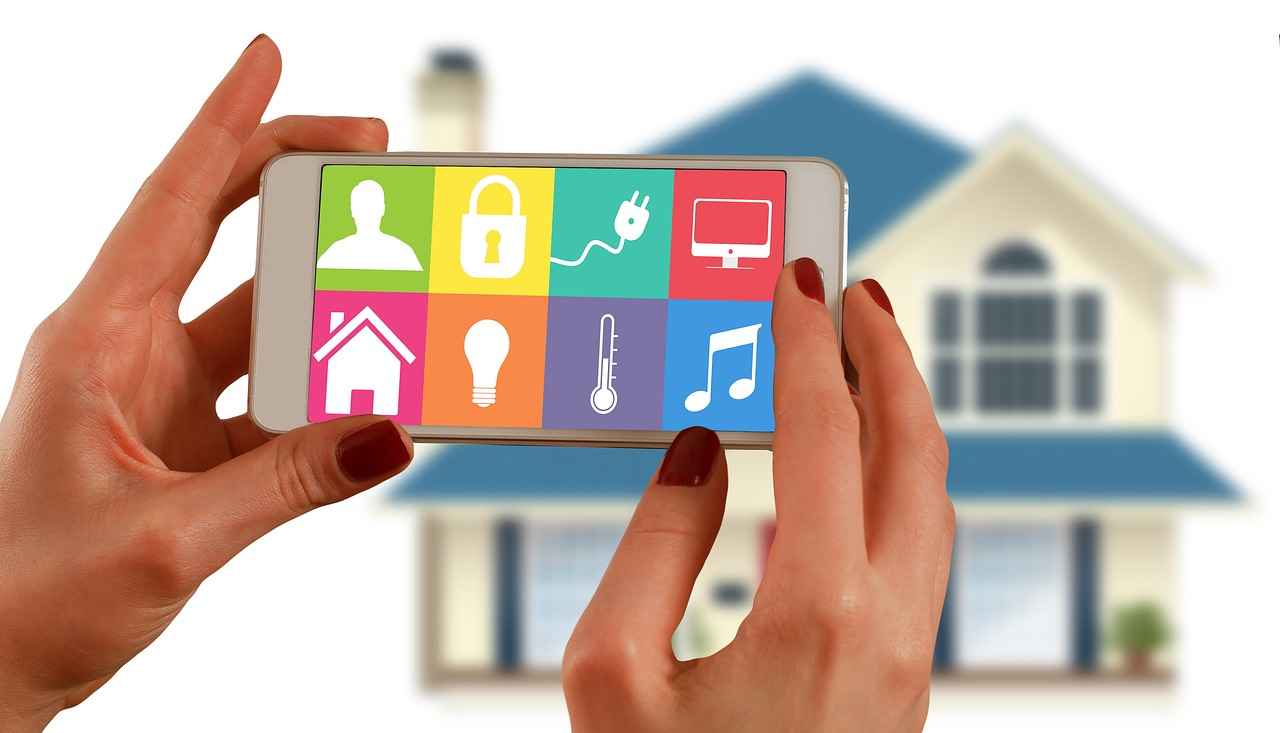
3. Smart Thermostats: Efficient Climate Control
Smart thermostats represent a significant advancement in home climate control technology, allowing for efficient heating and cooling tailored to your lifestyle. These devices are not just programmable thermostats; they learn from your habits and preferences, ensuring that your home remains comfortable while optimizing energy usage.
By utilizing smart algorithms, these thermostats can adjust temperatures based on your daily routines. For example, if you typically leave for work at 8 AM, the thermostat will gradually lower the heating or cooling before your departure, ensuring that energy is not wasted while you are away. This adaptive learning capability not only enhances comfort but also contributes to substantial energy savings over time.
- Energy Efficiency: Smart thermostats can reduce energy consumption by up to 20%, leading to lower utility bills.
- Remote Control: With mobile applications, you can adjust your home’s temperature from anywhere, ensuring you return to a comfortable environment.
- Integration with Other Smart Devices: These thermostats can work seamlessly with other smart home devices, such as smart speakers and lighting systems, creating a cohesive and automated home environment.
Many smart thermostats come equipped with features such as geofencing, which uses your smartphone’s location to determine if you are home or away. This means that the thermostat can automatically adjust settings based on your presence, further enhancing energy efficiency.
Voice control is another popular feature, allowing you to adjust settings simply by speaking commands to your smart assistant, making it easier to manage your home environment without lifting a finger.
In conclusion, investing in a smart thermostat is a wise choice for anyone looking to enhance their home’s comfort while saving on energy costs. With their advanced features and user-friendly interfaces, these devices are set to become a staple in modern smart homes.
3.1. Learning Capabilities
One of the most impressive features of modern smart thermostats is their ability to learn and adapt to your daily routines. These devices utilize advanced algorithms and sensors to monitor your heating and cooling preferences, allowing them to create a personalized climate control schedule that aligns with your lifestyle.
How Do Smart Thermostats Learn?
- Activity Tracking: Smart thermostats track when you are home or away, adjusting the temperature accordingly to maximize comfort and efficiency.
- Temperature Preferences: Over time, they learn your preferred temperature settings for different times of the day and can automatically adjust to maintain your ideal conditions.
- Seasonal Adjustments: These devices also adapt to seasonal changes, ensuring that your home remains comfortable year-round without requiring manual adjustments.
Benefits of Learning Capabilities
- Energy Efficiency: By optimizing heating and cooling based on your habits, smart thermostats can significantly reduce energy consumption, leading to lower utility bills.
- Increased Comfort: With automatic adjustments, you can enjoy a consistently comfortable environment without the need to constantly change settings.
- Remote Control: Many smart thermostats come with mobile apps, allowing you to monitor and adjust your home’s temperature from anywhere, ensuring you always return to a comfortable space.
Conclusion
The learning capabilities of smart thermostats represent a significant advancement in home climate control technology. By understanding your habits and preferences, these devices not only enhance comfort but also contribute to energy savings, making them an essential addition to any modern smart home.
3.2. Remote Access
Remote Access has become a game-changer in the smart home landscape, particularly when it comes to managing your home’s climate. With the advent of mobile applications, homeowners can now control their thermostats and other climate-related devices from virtually anywhere. This feature is especially beneficial for those with busy lifestyles or frequent travelers.
Imagine being able to adjust your home’s temperature before you even step foot inside. Whether you’re at work, on vacation, or simply running errands, the ability to remotely access your home’s climate control system ensures that you can return to a comfortable environment without any hassle. This not only enhances your comfort but also contributes to energy efficiency, as you can make adjustments based on your actual needs rather than relying on a preset schedule.
Moreover, many modern smart thermostats come equipped with intelligent learning capabilities. These devices can analyze your habits and preferences, adjusting the heating and cooling automatically based on your routine. For instance, if you typically leave for work at 8 AM and return around 6 PM, your thermostat can learn this pattern and adjust the temperature accordingly, ensuring optimal comfort when you arrive home.
Additionally, the user-friendly interfaces of mobile apps make it easy to monitor your energy usage in real-time. You can track how much energy your heating or cooling system is consuming, allowing you to make informed decisions about your energy consumption. This feature not only saves you money on utility bills but also promotes a more sustainable lifestyle.
In conclusion, the convenience of remote access to your home’s climate control systems is not just a luxury; it’s a necessity in today’s fast-paced world. With the ability to adjust settings on the go, you can ensure that your home remains a haven of comfort and efficiency.
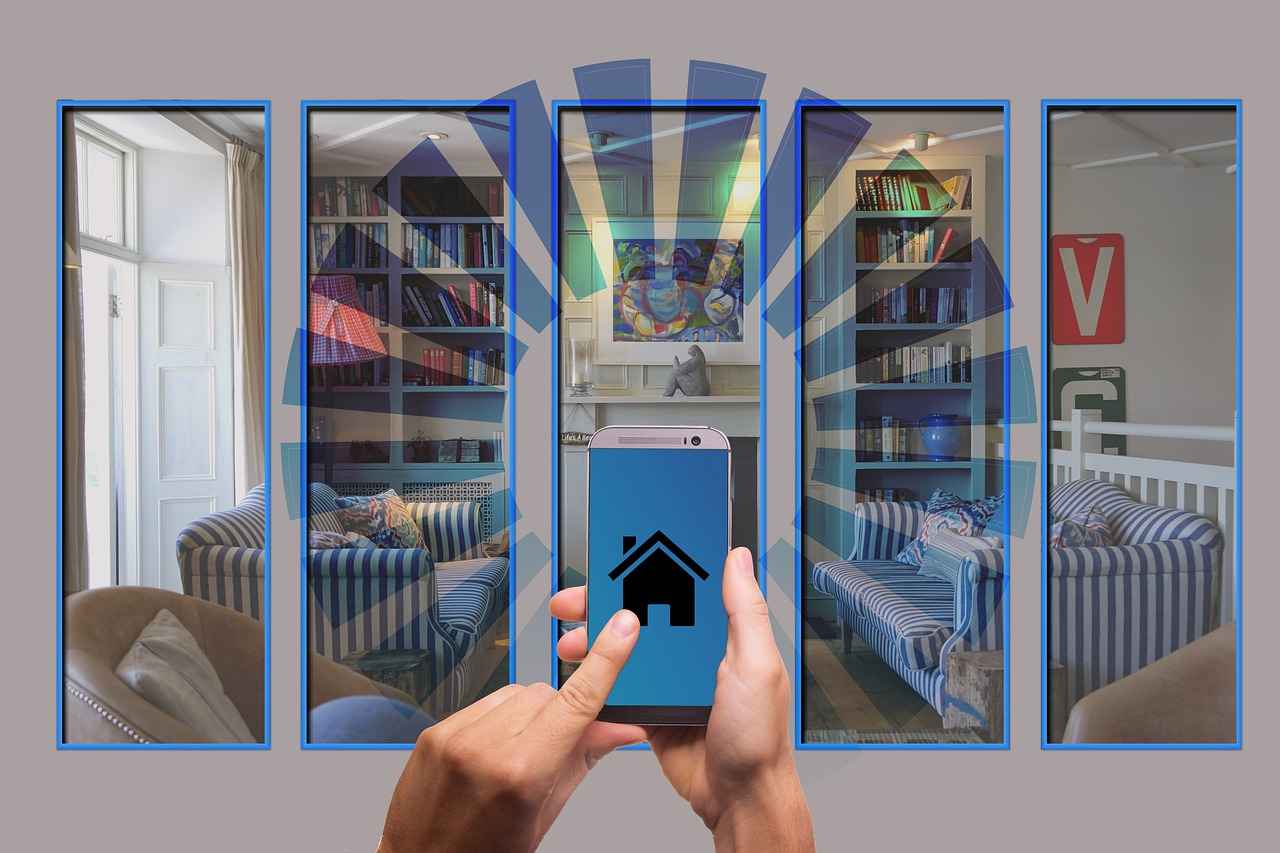
4. Smart Security Cameras: Enhanced Safety
Smart Security Cameras: Enhanced Safety
In an age where security is paramount, smart security cameras have become essential tools for safeguarding your home. These advanced devices not only provide real-time monitoring but also send instant alerts, ensuring that you are always aware of what is happening around your property. This level of vigilance offers invaluable peace of mind, especially when you are away.
- Real-Time Monitoring: Smart security cameras allow homeowners to monitor their property live through mobile applications, ensuring that you can keep an eye on your home from anywhere.
- Instant Alerts: Receive notifications on your smartphone if motion is detected, helping you to respond quickly to potential threats.
- Two-Way Audio: Communicate with visitors or intruders through built-in speakers and microphones, enhancing interaction and security.
When choosing a smart security camera, consider features such as:
| Feature | Description |
|---|---|
| High-Resolution Video | Ensures clear images for better identification of people and objects. |
| Night Vision | Provides clear footage even in low-light conditions, crucial for nighttime monitoring. |
| Cloud Storage Options | Allows you to save and access recorded footage remotely, ensuring you never lose important evidence. |
Moreover, integration with other smart home devices can significantly enhance your security system. For instance, linking your smart camera with smart locks and alarms creates a comprehensive security network that can be managed from a single application.
In conclusion, investing in smart security cameras is a proactive step towards ensuring the safety of your home and loved ones. With their innovative features and seamless integration capabilities, these devices not only protect your property but also provide a sense of security that is increasingly vital in today’s world.
4.1. Features to Look For
When selecting smart security cameras for your home, it is crucial to consider several key features that can significantly enhance your surveillance and communication capabilities. These features not only provide peace of mind but also ensure that your home is secure at all times.
- High-Resolution Video: Opt for cameras that offer high-definition (HD) or 4K video resolution. This ensures that you capture clear and detailed footage, making it easier to identify faces and license plates in the event of an incident.
- Night Vision: Look for cameras equipped with infrared night vision technology. This feature allows the camera to capture clear images even in low-light conditions, ensuring that your property is monitored 24/7.
- Two-Way Audio: Cameras with two-way audio capabilities enable you to communicate directly through the camera. This is particularly useful for interacting with delivery personnel or deterring intruders.
- Motion Detection: Choose cameras that come with advanced motion detection features. These cameras can send alerts to your smartphone when movement is detected, allowing for immediate action.
- Cloud Storage Options: Consider cameras that offer cloud storage for recorded footage. This ensures that you have access to video history even if the camera is tampered with or stolen.
- Integration with Smart Home Systems: Ensure that the camera can seamlessly integrate with other smart devices in your home, such as alarms and smart locks, to create a comprehensive security system.
In conclusion, investing in smart security cameras with these features will provide you with a robust surveillance solution, enhancing both safety and communication within your home. By prioritizing high-resolution video, night vision, and two-way audio, you can ensure comprehensive coverage and peace of mind.
4.2. Integration with Other Devices
Integration with Other Devices is a crucial aspect of modern smart security systems. By connecting smart security cameras with other devices such as alarms and smart locks, homeowners can create a cohesive security network that significantly enhances the safety and convenience of their living spaces.
Smart security cameras serve as the eyes of your home, providing real-time monitoring and alerts. When integrated with alarms, these cameras can trigger notifications or even initiate a lockdown of your home in the event of a security breach. This proactive approach ensures that you are always one step ahead in safeguarding your property.
Moreover, the integration of smart locks with security cameras allows for a more comprehensive security solution. For instance, when a smart lock detects an unauthorized entry attempt, it can trigger the security camera to start recording, providing valuable evidence if needed. This synergy between devices not only improves security but also streamlines the user experience, allowing homeowners to manage their security system from a single interface.
Another advantage of this integration is the ability to automate responses to specific events. For example, if a security camera detects motion during the night, it can activate outdoor lights, alert the homeowner via a mobile app, and even lock the doors automatically. This level of automation not only enhances safety but also provides peace of mind, knowing that your home is being monitored and protected at all times.
In conclusion, the integration of smart security cameras with alarms and smart locks is essential for creating a robust security system. By leveraging the capabilities of these devices, homeowners can ensure a higher level of protection, convenience, and control over their home security.

5. Smart Locks: Keyless Entry
Smart Locks: Keyless Entry
In today’s fast-paced world, smart locks are becoming a vital component of modern security solutions. They not only eliminate the need for traditional keys but also offer a range of keyless entry options that enhance both convenience and security for your home.
These innovative devices can be controlled through your smartphone, allowing you to lock or unlock your door from virtually anywhere. This feature is particularly useful for homeowners who frequently forget their keys or need to grant access to guests while they are away.
- Types of Smart Locks: Smart locks come in various forms, including keypad locks, fingerprint scanners, and Bluetooth-enabled options. Each type offers unique benefits tailored to different user preferences.
- Remote Locking and Unlocking: Many smart locks provide the ability to control access remotely, ensuring that you can secure your home even when you’re not physically present.
- Integration with Smart Home Systems: Smart locks can seamlessly integrate with other smart home devices, such as security cameras and alarm systems, creating a comprehensive security network.
Moreover, smart locks often come with features like temporary access codes for visitors or service personnel, which can be set to expire after a certain time. This functionality enhances security by ensuring that access is granted only when necessary.
In conclusion, adopting smart locks not only simplifies your entry experience but also significantly boosts your home’s security. With their advanced features and ease of use, smart locks are an essential addition to any modern smart home setup.
5.1. Types of Smart Locks
Smart locks are revolutionizing home security by offering a range of features that enhance both convenience and safety. In this section, we will explore the different types of smart locks available on the market today, highlighting their unique benefits for homeowners.
| Type of Smart Lock | Description | Benefits |
|---|---|---|
| Keypad Locks | These locks require a numerical code to unlock. |
|
| Fingerprint Locks | These locks use biometric technology to recognize fingerprints. |
|
| Bluetooth-Enabled Locks | These locks connect to your smartphone via Bluetooth. |
|
| Wi-Fi Smart Locks | These locks connect directly to your home Wi-Fi network. |
|
Choosing the right type of smart lock depends on your personal needs and preferences. Whether you prioritize security, convenience, or technology integration, there is a smart lock solution available to enhance your home security.
5.2. Remote Locking and Unlocking
In today’s fast-paced world, the convenience of remote locking and unlocking of smart locks has become a game-changer for homeowners. These innovative devices not only enhance security but also provide a level of flexibility that traditional locks simply cannot offer. Imagine being able to lock or unlock your door from anywhere, whether you’re at work, on vacation, or simply lounging on your couch. This feature is especially beneficial for those who frequently have visitors or service personnel accessing their homes.
Many smart locks come equipped with mobile applications that allow users to control their locks remotely. With just a few taps on your smartphone, you can ensure your home is secure or grant access to family members or friends without the need for physical keys. This is particularly useful for:
- Last-Minute Guests: If a friend decides to drop by unexpectedly, you can unlock the door for them without rushing home.
- Service Providers: You can allow access to cleaners, maintenance workers, or delivery personnel, ensuring they can enter and exit without needing to be physically present.
- Travelers: While you’re away, you can monitor and control access to your home, providing peace of mind against unauthorized entry.
Additionally, many smart locks feature activity logs, which allow you to track who has entered or exited your home and when. This feature can be particularly useful for monitoring children or roommates. Furthermore, some models offer integration with other smart home devices, enabling you to create a cohesive security system that can alert you of any suspicious activity.
In conclusion, the capability for remote locking and unlocking is an essential feature of modern smart locks, providing enhanced security and convenience. As technology continues to advance, these devices will play an increasingly vital role in our daily lives, making homes not only smarter but also safer.
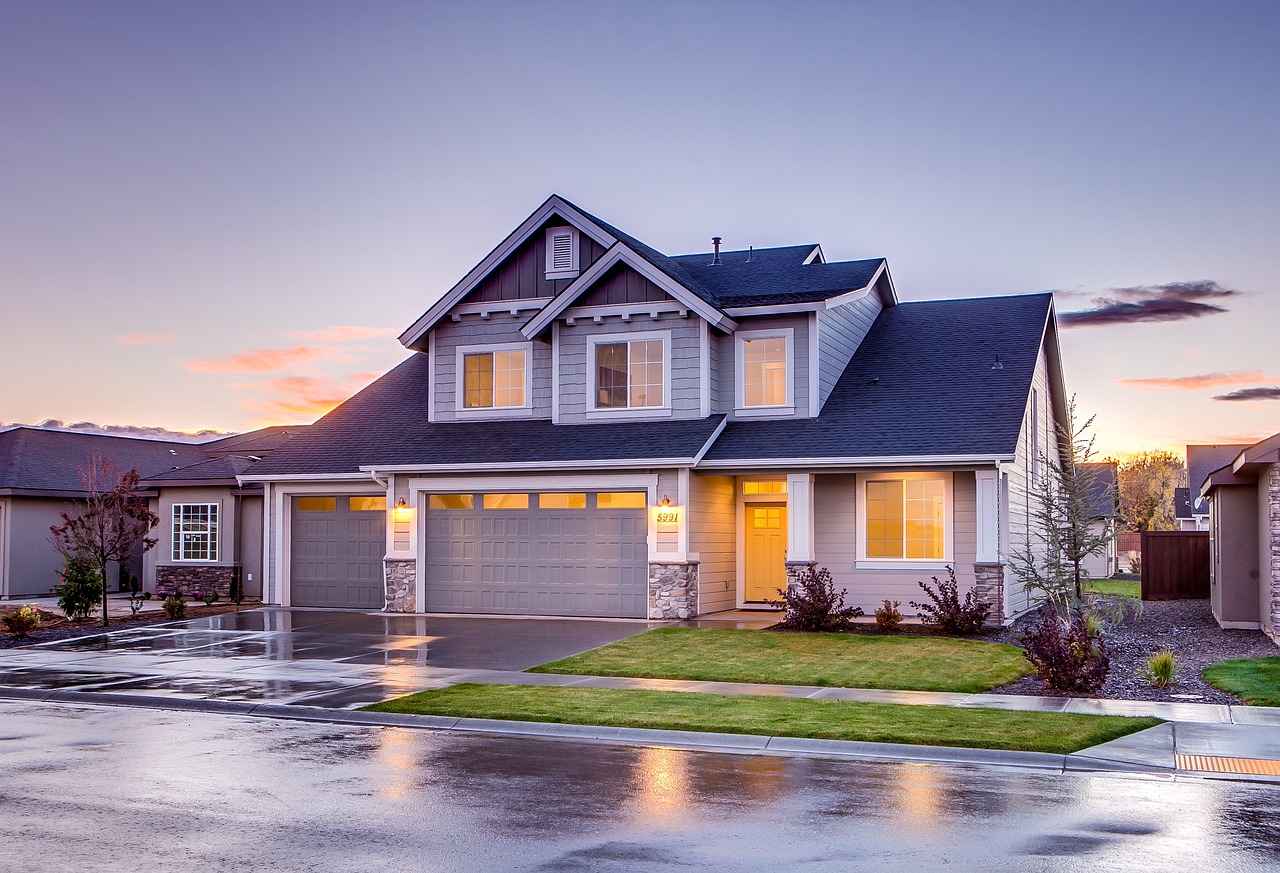
6. Smart Appliances: The Future of Cooking
Smart Appliances: The Future of Cooking
In today’s fast-paced world, smart appliances are revolutionizing the way we cook and manage food in our kitchens. These innovative devices, including smart ovens and smart refrigerators, are designed to enhance efficiency and convenience, transforming traditional cooking into a seamless experience.
- Connected Cooking: Smart ovens allow users to control cooking settings remotely through smartphone applications. This means you can preheat your oven while on your way home, ensuring your meal is ready when you arrive.
- Inventory Management: Smart refrigerators can track the contents of your fridge, suggest recipes based on available ingredients, and even send notifications when you’re running low on essential items. This feature not only reduces food waste but also simplifies meal planning.
- Energy Efficiency: Many smart appliances are designed with energy-saving features that help reduce your household’s carbon footprint. By optimizing energy consumption, these devices contribute to a more sustainable lifestyle.
Moreover, smart appliances can integrate with other smart home devices, allowing for a more cohesive and automated kitchen environment. For example, you could set your smart oven to start cooking while your smart lights dim to create the perfect ambiance for dinner.
As we look to the future, the role of smart appliances in our kitchens will only grow. They are not just tools but essential partners in our culinary adventures, making cooking more enjoyable and less time-consuming.
In conclusion, embracing smart appliances is a step towards a more efficient and modern kitchen. With their advanced features, they promise to enhance our cooking experiences while simplifying food management.
6.1. Connected Cooking
Connected Cooking has revolutionized the way we approach meal preparation in modern kitchens. With the advent of smart ovens, cooking has become not only more efficient but also more enjoyable. These innovative appliances allow users to control cooking settings remotely, bringing a new level of convenience to home chefs.
Smart ovens can be controlled via smartphone apps, enabling users to preheat the oven, adjust cooking times, and change temperatures while away from the kitchen. This feature is particularly beneficial for those with busy lifestyles, as it allows for meal prep to be seamlessly integrated into one’s schedule. Imagine being able to start preheating your oven while still at the grocery store, ensuring that dinner is ready when you arrive home.
Moreover, many smart ovens come equipped with advanced cooking modes that can be accessed through the app. These modes often include options for baking, roasting, and broiling, and can even suggest optimal cooking times and temperatures based on the recipe you are following. This not only simplifies the cooking process but also enhances the quality of the meals prepared.
Another remarkable feature of smart ovens is their ability to integrate with other smart home devices. For instance, you can sync your oven with smart speakers or displays to receive voice prompts or visual notifications about cooking progress. This integration allows for a more cohesive smart home experience, where all devices work together to make your life easier.
In addition to convenience, smart ovens promote energy efficiency. Many models feature sensors that adjust cooking times based on the size and type of food, ensuring that energy is not wasted. This not only helps in reducing utility bills but also contributes to a more sustainable lifestyle.
In conclusion, the rise of connected cooking through smart ovens is a game-changer for home kitchens. By offering remote control, advanced cooking features, and energy efficiency, these appliances are essential for anyone looking to enhance their cooking experience.
6.2. Inventory Management
In today’s fast-paced world, managing food inventory effectively is crucial for reducing waste and enhancing meal planning. Smart refrigerators have emerged as revolutionary appliances that not only preserve food but also actively assist in managing your kitchen inventory.
These innovative devices come equipped with advanced technology that allows them to track food items in real-time. Using built-in cameras and sensors, smart refrigerators can automatically detect what items are inside, their quantities, and their expiration dates. This functionality is particularly beneficial for busy households, as it eliminates the guesswork involved in meal planning.
Recipe Suggestions
One of the most exciting features of smart refrigerators is their ability to suggest recipes based on the ingredients you have on hand. For example, if you have chicken, broccoli, and rice, the appliance might recommend a stir-fry recipe, complete with cooking instructions. This not only encourages creativity in the kitchen but also helps in using up ingredients before they spoil.
Notifications and Alerts
Smart refrigerators can send notifications to your smartphone when items are running low or nearing their expiration dates. This feature ensures that you never run out of essential ingredients and helps you make informed shopping decisions, ultimately reducing food waste. Imagine receiving a reminder that your milk is about to expire, prompting you to use it in a recipe or buy more during your next grocery trip.
Energy Efficiency
In addition to managing food inventory, many smart refrigerators are designed with energy efficiency in mind. They can adjust their cooling settings based on usage patterns, helping to save on electricity bills while keeping your food fresh.
In conclusion, smart refrigerators are not just appliances; they are essential tools for modern kitchens. By providing inventory management, recipe suggestions, and timely notifications, they enhance meal planning and contribute to a more sustainable lifestyle.

7. Smart Plugs: Simple Automation
Smart plugs are a remarkable innovation in the realm of home automation, allowing you to transform ordinary devices into smart ones. By enabling remote control and scheduling, these devices enhance energy efficiency and provide unparalleled convenience throughout your home.
One of the most appealing aspects of smart plugs is their simplicity. Just plug them into any standard outlet, connect your devices, and you can control everything from lamps to coffee makers with just a few taps on your smartphone or through voice commands. This functionality makes it easy to manage your home environment, whether you’re at home or on the go.
- Energy Monitoring Features: Many smart plugs come equipped with energy monitoring capabilities. This allows you to track the energy consumption of each connected device, helping you identify which appliances are energy hogs. By understanding your usage patterns, you can make informed decisions to reduce your electricity bills.
- Compatibility with Voice Assistants: Smart plugs easily integrate with popular voice assistants like Amazon Alexa and Google Assistant. This feature enables hands-free control, making it even more convenient to operate your devices. You can simply say, “Turn off the living room lamp,” and your smart plug will comply.
Moreover, the scheduling feature allows you to automate your devices based on your daily routine. For instance, you can set your coffee maker to start brewing at 7 AM, ensuring you wake up to the delightful aroma of freshly brewed coffee. This capability not only adds convenience but also promotes energy savings by allowing you to turn off devices when they’re not in use.
In conclusion, smart plugs represent a simple yet effective way to enhance your home automation setup. By improving energy efficiency and convenience, they are a must-have for any modern household looking to embrace smart technology.
7.1. Energy Monitoring Features
Energy Monitoring Features of Smart Plugs
In today’s world, where energy efficiency is a growing concern, smart plugs with energy monitoring capabilities have become essential for homeowners looking to optimize their energy consumption. These devices not only allow you to control your appliances remotely but also provide valuable insights into your energy usage.
Understanding Energy Monitoring
Energy monitoring features in smart plugs enable users to track the electricity consumption of connected devices in real-time. By analyzing this data, homeowners can identify energy hogs—devices that consume excessive power and contribute to higher electricity bills. This information is crucial for making informed decisions about energy usage and can lead to significant savings over time.
Benefits of Energy Monitoring
- Cost Savings: By identifying which devices use the most energy, you can make adjustments to reduce your overall electricity costs.
- Environmental Impact: Reducing energy consumption not only saves money but also decreases your carbon footprint, contributing to a healthier planet.
- Convenience: Many smart plugs come with associated mobile apps that provide detailed reports on energy usage, making it easy to monitor your consumption.
How to Use Energy Monitoring Features
To take full advantage of energy monitoring features, follow these steps:
- Connect your smart plug to the desired appliance.
- Download the corresponding app and set up your account.
- Use the app to monitor real-time energy usage and analyze historical data.
- Set schedules for devices to turn off during peak hours to save energy.
Conclusion
Incorporating smart plugs with energy monitoring capabilities into your home can lead to enhanced energy efficiency and significant cost savings. By understanding your energy consumption patterns, you can make smarter choices that benefit both your wallet and the environment.
7.2. Compatibility with Voice Assistants
In today’s fast-paced world, smart plugs have become essential components of a modern smart home. One of their most significant advantages is their compatibility with voice assistants, such as Amazon Alexa, Google Assistant, and Apple HomeKit. This integration allows users to control their devices effortlessly and adds a new level of convenience to daily life.
With just a simple voice command, you can turn on or off any device connected to a smart plug. For instance, saying “Alexa, turn on the living room lamp” can illuminate your space without you having to lift a finger. This hands-free control is especially beneficial when your hands are full or when you’re relaxing on the couch.
Moreover, the compatibility with voice assistants enhances the overall smart home experience. You can create routines that automate multiple tasks simultaneously. For example, you can set a morning routine that turns on the coffee maker, opens the blinds, and plays your favorite news podcast—all with a single command. This level of automation not only saves time but also makes your home feel more personalized and responsive to your needs.
Additionally, many smart plugs come equipped with energy monitoring features, which can be accessed through voice commands. You can ask your voice assistant, “How much energy is my heater using?” This functionality empowers users to make informed decisions about their energy consumption and promote sustainability.
In conclusion, the compatibility of smart plugs with voice assistants significantly enhances the convenience and efficiency of smart home systems. By integrating these technologies, homeowners can enjoy a seamless, hands-free experience that simplifies everyday tasks and promotes a more connected lifestyle.

8. Smart Home Hubs: Centralized Control
Smart home hubs are essential components of a modern smart home, acting as the centralized control point for managing various devices. These hubs allow users to streamline their smart home experience by facilitating communication between different brands and platforms, ensuring seamless automation and control.
In today’s world, where technology is advancing rapidly, the need for a cohesive smart home ecosystem has never been greater. Smart home hubs simplify the process of managing devices, making it possible to control everything from lighting to security systems from a single interface. This not only enhances user convenience but also maximizes the potential of each device.
- Enhanced Compatibility: Smart hubs support a wide range of devices and brands, bridging the gap between different technologies.
- Streamlined Control: Users can manage multiple devices through a single app or interface, reducing the clutter of numerous apps.
- Automation Capabilities: Smart hubs enable users to set up automated routines that can trigger multiple devices simultaneously, enhancing the overall functionality of the home.
Some of the most popular smart hubs in the market include:
| Smart Hub | Key Features |
|---|---|
| Amazon Echo Plus | Voice control, Zigbee compatibility, music streaming |
| Samsung SmartThings | Wide device compatibility, automation routines, user-friendly app |
| Google Nest Hub | Google Assistant integration, touchscreen display, smart home control |
As technology continues to evolve, the role of smart home hubs will only become more significant. They not only enhance the functionality of individual devices but also create a more integrated and user-friendly home environment. Embracing smart home hubs is a step towards achieving a more efficient and convenient lifestyle.
8.1. Benefits of a Smart Hub
A Smart Hub: The Heart of Your Smart Home
In today’s rapidly evolving technological landscape, a smart hub serves as the essential backbone for any modern smart home. This centralized device not only simplifies the management of various smart devices but also enhances their compatibility, allowing homeowners to create a cohesive and efficient smart home ecosystem.
1. Streamlined Device Management
A smart hub acts as a central control system for all your smart devices, including lights, thermostats, security cameras, and more. With a single interface, users can easily manage and monitor their devices, reducing the complexity that comes with juggling multiple apps. This streamlined management not only saves time but also enhances the overall user experience.
2. Enhanced Compatibility
One of the key benefits of a smart hub is its ability to enhance compatibility across different brands and platforms. Many smart devices operate on various protocols, such as Zigbee, Z-Wave, and Wi-Fi. A smart hub can bridge these gaps, allowing users to seamlessly integrate devices from different manufacturers. This compatibility ensures that homeowners can choose the best devices for their needs without being limited by brand constraints.
3. Automation and Customization
Smart hubs enable users to create customized automation routines that enhance convenience and energy efficiency. For example, you can set your lights to turn on automatically when you arrive home or adjust your thermostat based on your daily schedule. Such automation not only simplifies daily tasks but also contributes to energy savings, making your home more environmentally friendly.
4. Voice Control Integration
Many smart hubs are compatible with popular voice assistants like Amazon Alexa and Google Assistant. This integration allows users to control their devices using simple voice commands, further enhancing the ease of use and accessibility for all household members.
Conclusion
In conclusion, investing in a smart hub is a wise choice for anyone looking to enhance their smart home experience. With its ability to streamline device management, improve compatibility, facilitate automation, and integrate voice control, a smart hub is truly the heart of a cohesive smart home ecosystem.
8.2. Popular Smart Hubs
Popular Smart Hubs: Your Central Control for Smart Home Devices
In the rapidly evolving world of smart home technology, smart hubs play a crucial role in ensuring seamless integration and control of various devices. These hubs act as the brain of your smart home, allowing you to manage everything from lighting to security systems with ease. In this section, we will explore some of the most popular smart hubs available today, including the Amazon Echo Plus and Samsung SmartThings.
- Amazon Echo Plus
- Voice Control: With built-in Alexa, the Echo Plus allows users to control compatible devices using simple voice commands.
- Compatibility: It supports a wide range of smart devices, making it an excellent choice for those looking to build a diverse smart home ecosystem.
- Smart Home Hub: The Echo Plus features a built-in Zigbee hub, enabling direct control of Zigbee-compatible devices without needing additional hubs.
- Samsung SmartThings
- Versatile Connectivity: SmartThings supports both Zigbee and Z-Wave protocols, allowing for extensive compatibility with various smart devices.
- User-Friendly App: The SmartThings app provides an intuitive interface for managing all connected devices, making setup and control straightforward.
- Automation Features: Users can create custom automations and routines, enhancing the functionality of their smart home.
Both the Amazon Echo Plus and Samsung SmartThings hubs exemplify the benefits of having a centralized control system for your smart home. They not only simplify device management but also enhance the overall user experience by providing extensive compatibility with various smart devices.
In conclusion, investing in a reliable smart hub is essential for anyone looking to create a cohesive and efficient smart home environment. With the right hub, you can elevate your home automation experience, making your living space more convenient and enjoyable.

9. Smart TVs: Entertainment Revolutionized
Smart TVs have transformed the way we consume media, offering an array of features that enhance our viewing experience. In 2025, these devices are more than just televisions; they are multimedia hubs that integrate seamlessly into our smart homes.
With access to numerous streaming services such as Netflix, Hulu, and Disney+, smart TVs allow users to enjoy their favorite shows and movies without the need for additional devices. The convenience of having everything in one place is a game changer for entertainment enthusiasts.
Moreover, the inclusion of voice control capabilities has made it easier than ever to navigate through content. Users can simply speak commands to search for shows, change channels, or adjust settings, making the experience more user-friendly and accessible.
In addition to streaming, many smart TVs come equipped with advanced features such as gaming integration. This allows for a more immersive gaming experience, catering to both casual and hardcore gamers. The ability to connect to gaming consoles and utilize high-definition graphics enhances the overall entertainment value.
Smart TVs also support a variety of apps that can be downloaded, providing users with even more options for entertainment. From news apps to social media platforms, the versatility of these devices is unmatched.
| Feature | Description |
|---|---|
| Streaming Services | Access to popular platforms like Netflix and Hulu |
| Voice Control | Hands-free navigation and control |
| Gaming Integration | Enhanced gaming experience with high-definition graphics |
| App Support | Downloadable apps for news, social media, and more |
In conclusion, smart TVs are essential for modern entertainment, providing a comprehensive solution for all your media needs. Their ability to integrate with other smart home devices further enhances their functionality, making them a must-have for any tech-savvy household.
9.1. Streaming and Gaming Integration
Streaming and Gaming Integration: The Future of Entertainment
As technology continues to evolve, smart TVs have become a cornerstone of modern entertainment. With their built-in streaming capabilities and advanced gaming features, these devices not only enhance viewing experiences but also cater to the diverse interests of all family members.
1. Seamless Streaming Experience
Smart TVs provide access to a multitude of streaming services such as Netflix, Hulu, and Amazon Prime Video. This integration allows users to enjoy their favorite shows and movies without the need for additional devices. The user-friendly interfaces make it easy for anyone, from kids to grandparents, to find and watch content effortlessly.
2. Gaming Features for All Ages
In addition to streaming, many smart TVs are equipped with gaming capabilities. This includes support for popular gaming consoles and cloud gaming services, allowing families to enjoy gaming together. With features like low latency and high refresh rates, smart TVs provide a competitive edge for gamers, making them ideal for both casual players and serious gamers alike.
3. Voice Control and Smart Integration
Many smart TVs now come with voice control features, enabling users to search for content, adjust settings, and even control other smart devices in their home using simple voice commands. This hands-free convenience enhances the overall entertainment experience, making it more accessible for everyone.
4. Conclusion: A Hub for Family Entertainment
With their combination of streaming and gaming integration, smart TVs have transformed the way families engage with entertainment. They serve as a central hub for all media consumption, ensuring that every family member can find something they enjoy, whether it’s watching a movie, binging a series, or playing the latest video games.
9.2. Voice Control Features
In the ever-evolving landscape of technology, smart TVs have emerged as a pivotal component of modern entertainment systems. One of the most remarkable advancements in this domain is the integration of voice control features. This innovation not only enhances user experience but also transforms the way we interact with our televisions.
What is Voice Control in Smart TVs?
Voice control in smart TVs allows users to operate their devices using voice commands. This feature enables users to search for content, change channels, adjust volume, and even control settings without the need for a traditional remote control. With the rise of virtual assistants like Amazon Alexa, Google Assistant, and Siri, voice control has become more intuitive and accessible.
Benefits of Voice Control
- Hands-Free Operation: Voice control allows for a more convenient and hands-free experience, especially when multitasking or when the remote is out of reach.
- Enhanced Accessibility: This feature is particularly beneficial for individuals with mobility issues or disabilities, making it easier for them to enjoy their favorite shows and movies.
- Quick Searches: Users can simply speak the name of a show or movie to find it instantly, eliminating the need to navigate through menus.
How to Use Voice Control
To utilize voice control, users typically need to set up their smart TV with a compatible virtual assistant. This involves connecting the TV to the internet and linking it to the voice assistant app. Once set up, users can activate voice commands by saying a wake word, such as “Hey Google” or “Alexa,” followed by their request.
Conclusion
Voice control features in smart TVs are revolutionizing the entertainment experience by providing effortless navigation and enhancing accessibility. As technology continues to advance, we can expect even more sophisticated voice recognition capabilities, making our viewing experience more enjoyable and interactive.
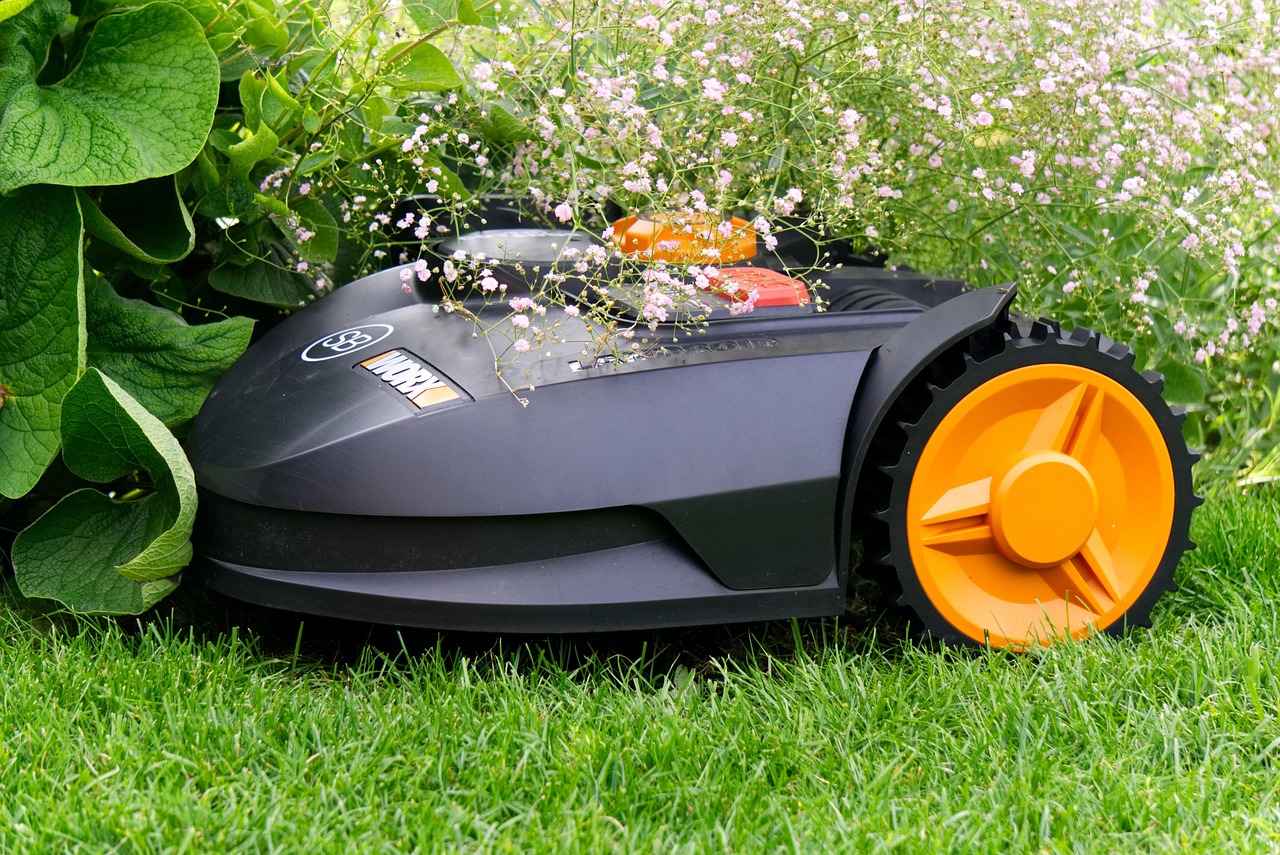
10. Smart Blinds: Automated Privacy
In the realm of modern home automation, smart blinds have emerged as a revolutionary solution for managing natural light and privacy effortlessly. These innovative devices not only enhance your home’s aesthetic appeal but also contribute significantly to energy efficiency and comfort.
One of the standout features of smart blinds is their ability to offer automated control over light exposure. Homeowners can easily schedule when their blinds open or close, allowing for optimal light management throughout the day. This feature is particularly beneficial for those who want to maximize natural light during the day while ensuring privacy during the evening. The integration of smart blinds with home automation systems means that they can operate in conjunction with other devices, creating a seamless living environment.
- 10.1. Scheduling and Automation: Smart blinds can be programmed to open and close at specific times, aligning with your daily routine. For example, you can set them to open at sunrise and close at sunset, ensuring that your home is always bathed in the right amount of light.
- 10.2. Integration with Lighting: When paired with smart lighting systems, smart blinds can enhance the overall ambiance of your home. Imagine your blinds automatically adjusting as your smart lights change color and intensity, creating the perfect atmosphere for any occasion.
Furthermore, smart blinds can significantly contribute to energy savings. By regulating the amount of sunlight entering your home, they help maintain a consistent indoor temperature, reducing the need for heating and cooling. This not only leads to lower energy bills but also creates a more sustainable living environment.
In conclusion, smart blinds are an essential addition to any modern home. They offer a perfect blend of convenience, aesthetic appeal, and energy efficiency, making them a must-have for homeowners looking to enhance their living spaces.
10.1. Scheduling and Automation
In today’s fast-paced world, the need for convenience and efficiency in our homes is more important than ever. Smart blinds offer a remarkable solution by allowing homeowners to automate their window coverings, enhancing both comfort and energy efficiency. With the ability to schedule these blinds to open or close at specific times, you can optimize light exposure and maintain privacy effortlessly throughout the day.
Imagine waking up to the gentle glow of sunlight filtering through your smart blinds, set to open automatically at sunrise. This not only helps to regulate your body’s natural circadian rhythm but also creates a warm and inviting atmosphere as you start your day. Conversely, scheduling your blinds to close during the hottest part of the day can significantly reduce the need for air conditioning, leading to lower energy bills.
Benefits of Scheduling Smart Blinds:
- Enhanced Privacy: By setting your blinds to close during peak hours, you can ensure that your home remains private from prying eyes.
- Energy Efficiency: Automated blinds help maintain a comfortable indoor temperature, reducing reliance on heating and cooling systems.
- Convenience: With smart blinds, you can control light levels without having to manually adjust each window covering, making life easier.
Moreover, the integration of smart blinds with other smart home devices amplifies their functionality. For instance, they can work in conjunction with smart lighting systems, creating a synchronized environment that enhances your living space’s ambiance. This level of automation not only improves your home’s aesthetic appeal but also contributes to energy conservation.
In conclusion, scheduling and automating your smart blinds is a game-changer for modern living. It provides a seamless blend of comfort, privacy, and energy efficiency, making it an essential component of any smart home setup.
10.2. Integration with Lighting
Integration with Smart Lighting is a key feature that enhances the functionality of smart blinds, creating an interconnected ecosystem within your home. By allowing smart blinds to work in harmony with smart lighting, homeowners can achieve a level of control and ambiance that was previously unattainable.
Imagine waking up in the morning as the smart blinds gently open to let in natural light, while your smart lights gradually brighten to mimic a sunrise. This synchronized control not only helps to regulate your body’s internal clock but also enhances your mood and energy levels. With the ability to automate these functions, you can set your home to respond to your lifestyle effortlessly.
| Benefits of Integration | Description |
|---|---|
| Enhanced Ambiance | By coordinating the opening and closing of blinds with lighting adjustments, you can create the perfect atmosphere for any occasion, whether it’s a cozy movie night or a lively dinner party. |
| Energy Efficiency | Smart blinds can help regulate indoor temperatures, reducing the need for heating and cooling, while smart lighting can adjust based on the amount of natural light available. |
| Convenience | Control everything from one central hub or via voice commands, making it easier to manage your home environment without the hassle of multiple remotes or apps. |
Furthermore, the integration of smart blinds with smart lighting systems can be customized to fit your daily routine. For instance, you can program your blinds to close during the hottest part of the day while your lights dim automatically, ensuring that your home remains cool and comfortable.
In conclusion, the integration of smart blinds and smart lighting is not just a luxury but a practical solution for modern living. Embracing this technology can lead to significant improvements in both comfort and energy efficiency, making your home a more enjoyable place to live.
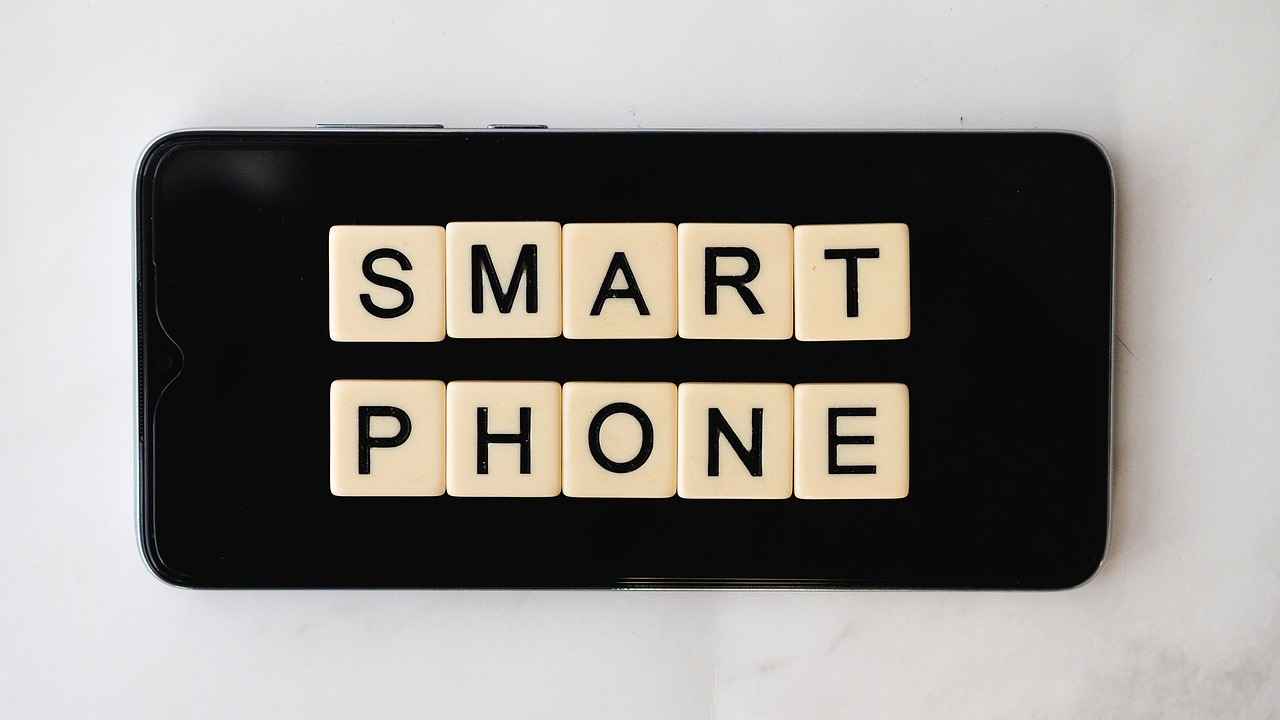
11. Smart Irrigation Systems: Efficient Gardening
Smart Irrigation Systems are transforming the way we approach gardening and landscape maintenance. By utilizing advanced technology, these systems automate watering schedules based on real-time weather conditions, ensuring that your plants receive the optimal amount of water without waste. This not only promotes healthy growth but also conserves precious water resources, making it an environmentally friendly solution for homeowners and gardeners alike.
Smart irrigation systems typically incorporate weather data and soil moisture sensors to determine the best watering times and durations. These sensors monitor the moisture levels in the soil, allowing the system to adjust watering schedules accordingly. For instance, if rain is forecasted, the system will delay watering, preventing over-saturation and potential root rot.
- Water Conservation: By adjusting watering schedules based on actual weather conditions, these systems significantly reduce water usage compared to traditional irrigation methods.
- Healthy Plant Growth: Consistent moisture levels promote robust plant health, reducing the risk of drought stress or overwatering.
- Convenience: Homeowners can control their irrigation systems remotely through mobile apps, allowing for easy adjustments from anywhere.
- Cost Savings: Reduced water consumption leads to lower utility bills, making smart irrigation a financially savvy choice.
When selecting a smart irrigation system, consider features such as:
- Integration with weather forecasting services
- Soil moisture sensors for precise watering
- Mobile app compatibility for remote control
- Customizable watering schedules based on plant types
In conclusion, smart irrigation systems represent a significant advancement in gardening technology. By automating watering schedules and utilizing real-time environmental data, these systems not only promote healthy gardens but also contribute to water conservation efforts. As we move towards a more sustainable future, investing in smart irrigation technology is a wise choice for any garden enthusiast.
11.1. Soil Moisture Sensors
Soil Moisture Sensors: The Key to Thriving Gardens
In the world of gardening, soil moisture sensors are becoming essential tools for both amateur and professional gardeners. These innovative devices are designed to monitor the moisture levels in the soil, ensuring that plants receive the precise amount of water they need for optimal growth.
By utilizing soil moisture sensors, gardeners can prevent the common issue of overwatering, which can lead to root rot and other detrimental conditions for plants. Instead of relying solely on guesswork or a set watering schedule, these sensors provide real-time data, allowing for more informed decisions regarding irrigation. This not only promotes healthier plants but also conserves water, making gardening more sustainable.
How Do Soil Moisture Sensors Work?
- Soil moisture sensors are typically inserted into the ground where they measure the volumetric water content in the soil.
- They use electrical resistance or capacitance to determine moisture levels, sending this data to a connected device or app.
- Some advanced models can even integrate with smart irrigation systems, automatically adjusting watering schedules based on current soil conditions.
Benefits of Using Soil Moisture Sensors
- Water Conservation: By providing accurate moisture readings, these sensors help reduce water waste.
- Improved Plant Health: Ensuring plants receive the right amount of water leads to stronger and healthier growth.
- Convenience: Automated systems can take the hassle out of daily watering tasks.
In conclusion, soil moisture sensors are an invaluable addition to any garden. They not only enhance the health of your plants but also promote sustainable gardening practices. By investing in this technology, gardeners can enjoy a flourishing garden while being mindful of water usage.
11.2. Remote Control Features
In the age of smart technology, remote control features in smart irrigation systems have become a game-changer for homeowners looking to maintain their gardens efficiently. These systems offer the ability to monitor and adjust watering schedules from anywhere, providing both convenience and flexibility.
- Mobile App Control: Most smart irrigation systems come equipped with a user-friendly mobile application that allows you to set watering times and durations with just a few taps on your smartphone. This feature is especially useful for busy homeowners who may not always be available to manage their gardens in person.
- Weather Integration: Advanced systems can integrate with local weather forecasts to adjust watering schedules automatically. For example, if rain is expected, the system can skip scheduled watering, conserving water and ensuring your plants are not overwatered.
- Soil Moisture Monitoring: Many smart irrigation systems include soil moisture sensors that provide real-time data on the moisture levels in your garden. This information allows you to make informed decisions about when to water, ensuring optimal plant health.
- Customizable Schedules: Users can set specific schedules based on plant types and seasonal changes. This level of customization ensures that each plant receives the appropriate amount of water, promoting healthy growth and minimizing waste.
With these remote control features, homeowners can enjoy a more efficient and effective gardening experience. Whether you’re at work, on vacation, or simply relaxing at home, you can easily manage your garden’s watering needs with confidence.
Overall, the integration of smart technology into irrigation systems not only enhances convenience but also contributes to sustainable gardening practices, making it an essential tool for modern homeowners.

12. Conclusion: The Future of Smart Homes
Conclusion: The Future of Smart Homes
As we look ahead to 2025, the landscape of smart home technology is set to undergo a remarkable transformation. The integration of innovative devices will not only enhance convenience and security but also promote energy efficiency, making these technologies essential for modern living. Embracing the smart home revolution will significantly improve our lifestyles, allowing for a more connected and efficient home environment.
The must-have smart home devices of the future will cater to various aspects of daily life. From smart speakers that act as central hubs for controlling devices to smart lighting systems that create the perfect ambiance while saving energy, the advancements are designed to cater to user needs. Additionally, smart thermostats will ensure optimal climate control, adapting to personal habits and preferences.
Security will also see a significant upgrade with the advent of smart security cameras and smart locks, providing homeowners with peace of mind through real-time monitoring and keyless entry options. These devices not only enhance safety but also offer convenience, allowing for remote access and control.
Moreover, the rise of smart appliances will revolutionize our cooking and food management experiences, while smart plugs will enable simple automation of everyday devices, promoting energy efficiency throughout the home. The integration of smart home hubs will further streamline the management of these devices, creating a cohesive ecosystem that simplifies user interaction.
In summary, as technology continues to evolve, the smart home devices of 2025 will redefine the way we live, work, and interact within our spaces. By adopting these innovations, we can create a more efficient, secure, and enjoyable living environment. Embrace the future of smart homes for a better lifestyle.
Frequently Asked Questions
- What are the benefits of using smart home devices?
Smart home devices offer enhanced convenience, energy efficiency, and improved security. They can automate daily tasks, monitor your home remotely, and even help reduce your energy bills.
- How do smart speakers integrate with other devices?
Smart speakers act as a central hub, allowing you to control compatible devices through voice commands. This means you can adjust lighting, temperature, and even security settings just by talking!
- Are smart appliances worth the investment?
Absolutely! Smart appliances streamline cooking and food management, making your kitchen more efficient. They can save you time and help reduce food waste, which is a win-win!
- Can I control my smart home devices when I’m away?
Yes! Most smart home devices come with mobile apps that allow you to control them remotely. This means you can adjust your thermostat, check security cameras, and even lock doors from anywhere.
- What should I consider when choosing a smart home hub?
Look for compatibility with your existing devices, ease of use, and the range of features offered. Popular options like Amazon Echo Plus and Samsung SmartThings provide extensive compatibility and user-friendly interfaces.














